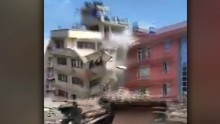Earthquake-hit Nepal traumatized but not beaten
The last thing they needed was another powerful tremor.But on Wednesday afternoon, a 7.3-magnitude aftershock shook the ground so much that people could barely move for almost 30 seconds. It was another sickening blow for Nepal's traumatized population.Not knowing what devastation would await us, we flew in to the country's capital -- just days after the bulk of CNN's field teams had left the country following the destructive earthquake of April 25.
The early signs from the air were good this time: Kathmandu seemed to have electricity as we circled over it preparing to land.READ: Dozens dead after another major earthquake
We then disembarked quickly -- another good sign given how overwhelmed this relatively small airport has been as the world rushed to fly in aid and relief workers.
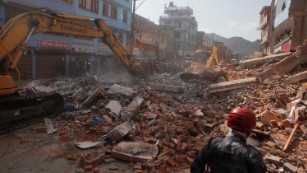
Nepal struck by another deadly quake
As we made our way into the city heading to our live location, we passed a golf course that had turned into a tented city. Apparently a few days ago it had all but emptied out -- people found it safe enough to go back to their homes.
But when the 7.3-magnitude quake hit, the golf course fairways quickly filled up again as hundreds of people moved outside with tents.Our live location was in a commercial district of Kathmandu that sprang up quickly 15 to 20 years ago without much attention paid to building codes. We stood in front of what had been a five-story building the day before. Badly damaged by the April 25 quake, it suddenly collapsed during Tuesday's jolt. It was a similar story with many buildings in this area; covered in large cracks they looked like they could come down at any time.
Mental terror
A few hours after we arrived we felt another aftershock. It only measured 4.2 but it gave us a real jolt. Dogs in the neighborhood started howling, while people were yelling and running outside into the streets.
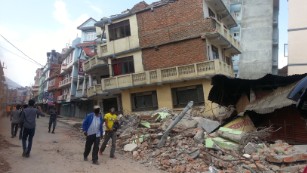
Second quake continues 'unending nightmare' in Nepal 03:41
Experiencing an aftershock, you get a real sense of the mental terror people are going through here. There's an understandable fear that at any moment the ground could shake and buildings could collapse.When we arrived at the airport some luggage fell and made a loud noise. This made people nearby jump and shout. People here are really on edge. Statistically, they've had more than 140 aftershocks since the big quake, and even since Wednesday's 7.3 tremor, there have been something like five aftershocks. So it just hasn't stopped.
But where there's terror, there's also resilience.
We saw one family sitting in their car, planning to spend the night there. Another family was sleeping in what was basically a motorcycle garage. Around a dozen people -- kids, grandparents -- were all sleeping together because their house has cracks in it and could be unsafe. Despite having lost their home, they said they felt fortunate because unlike a lot of families here who have lost people they love, they still have each other. It amazed me that they can remain optimistic given everything that's happened.
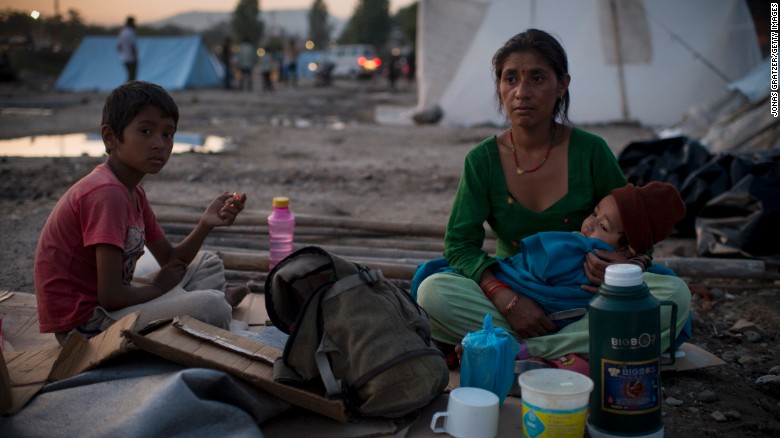
A woman holds a child as she sits out in the open in Kathmandu following a second major earthquake on May 12.
Major challenges
Two weeks after the first devastating earthquake and the world's attention had started to move on. Not so here.
Reading the local newspaper -- the Himalayan -- the entire front page and much of the inside of the paper is devoted to earthquake coverage. Every single day there are major challenges in delivering aid to people who need it. They haven't even figured out a plan to build temporary shelters for families. And the monsoon season is just weeks away. With so many sleeping outside, you wonder what they're going to do when the heavy rains come.
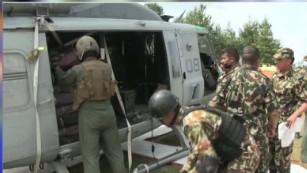
U.S. military helicopter missing in Nepal
In Kathmandu the supply situation is better, obviously because it's closer to the airport. But the flow of supplies to rural, harder to reach areas is very slow, as helicopters are needed to ferry supplies in. But many of the pilots from other countries are not trained to handle the really mountainous, dangerous terrain. So they have to bring the supplies to certain areas, unload them and then put them on to Nepalese helicopters to get them in -- a really tedious process.
It's in these rural areas, closer to the epicenter, that the picture could get worse. A spokesperson for the Nepal Home Ministry told CNN he expects the number of dead to rise sharply as they access more remote areas and destroyed buildings. They suspect many people were trapped inside and haven't yet been found.
News Courtesy: www.cnn.com

